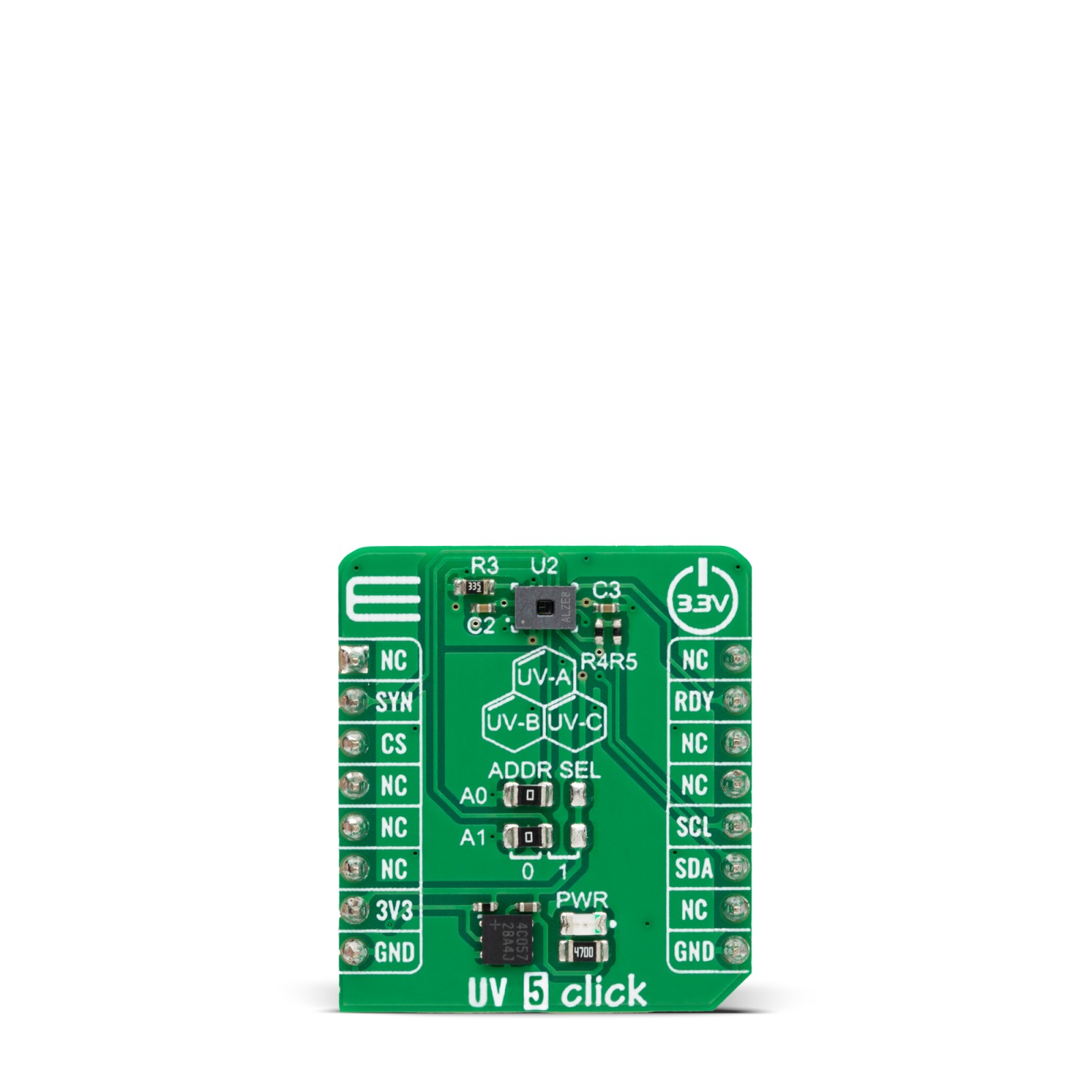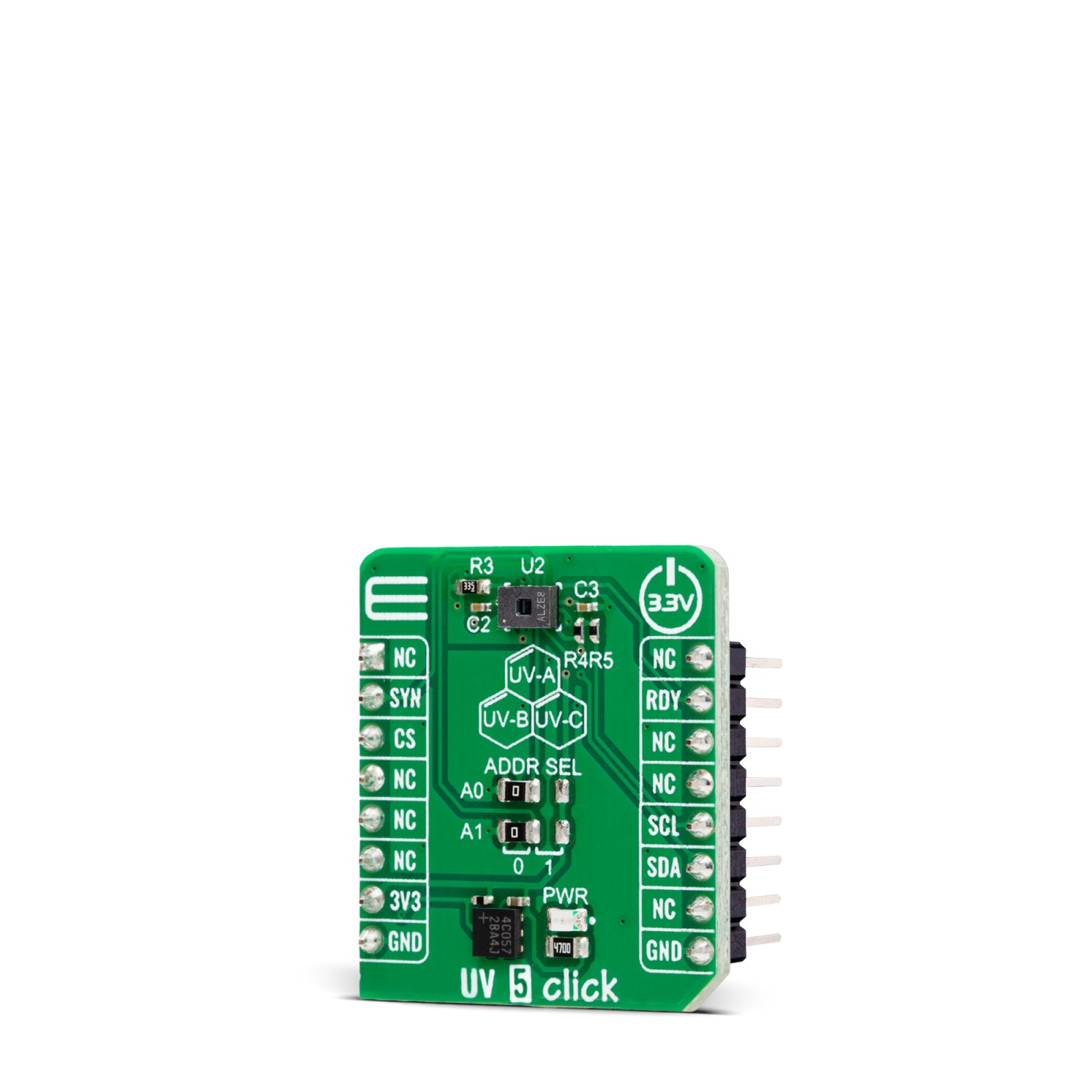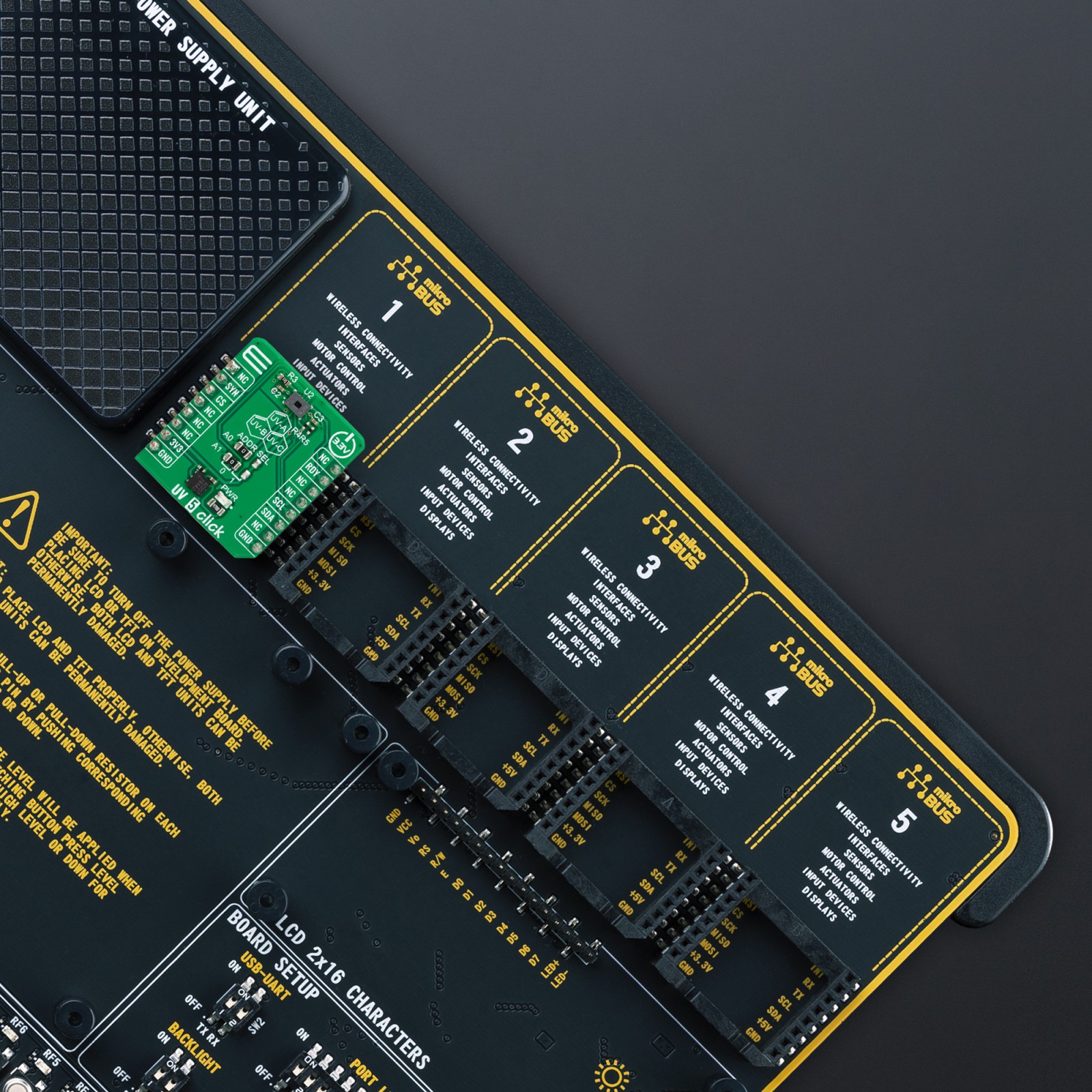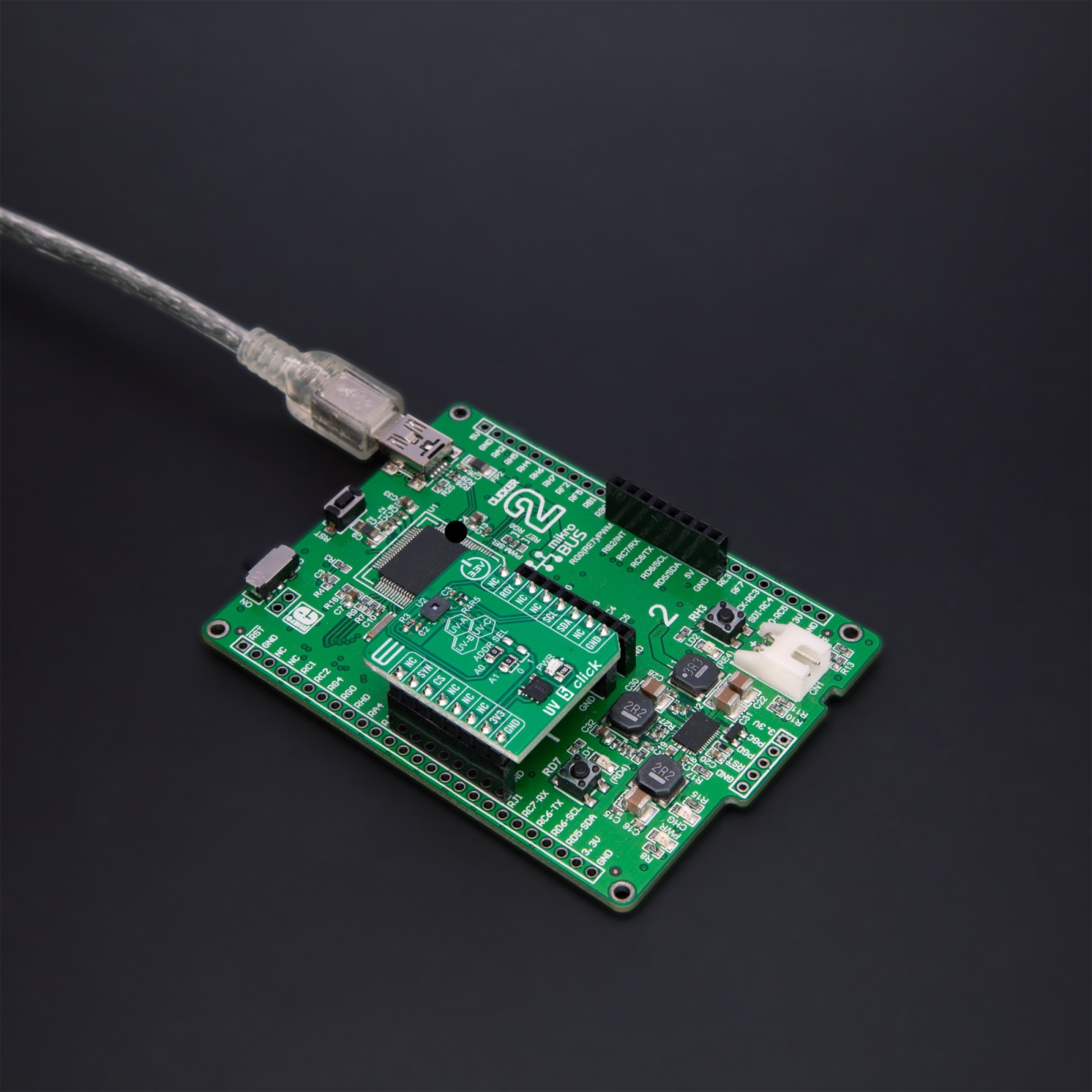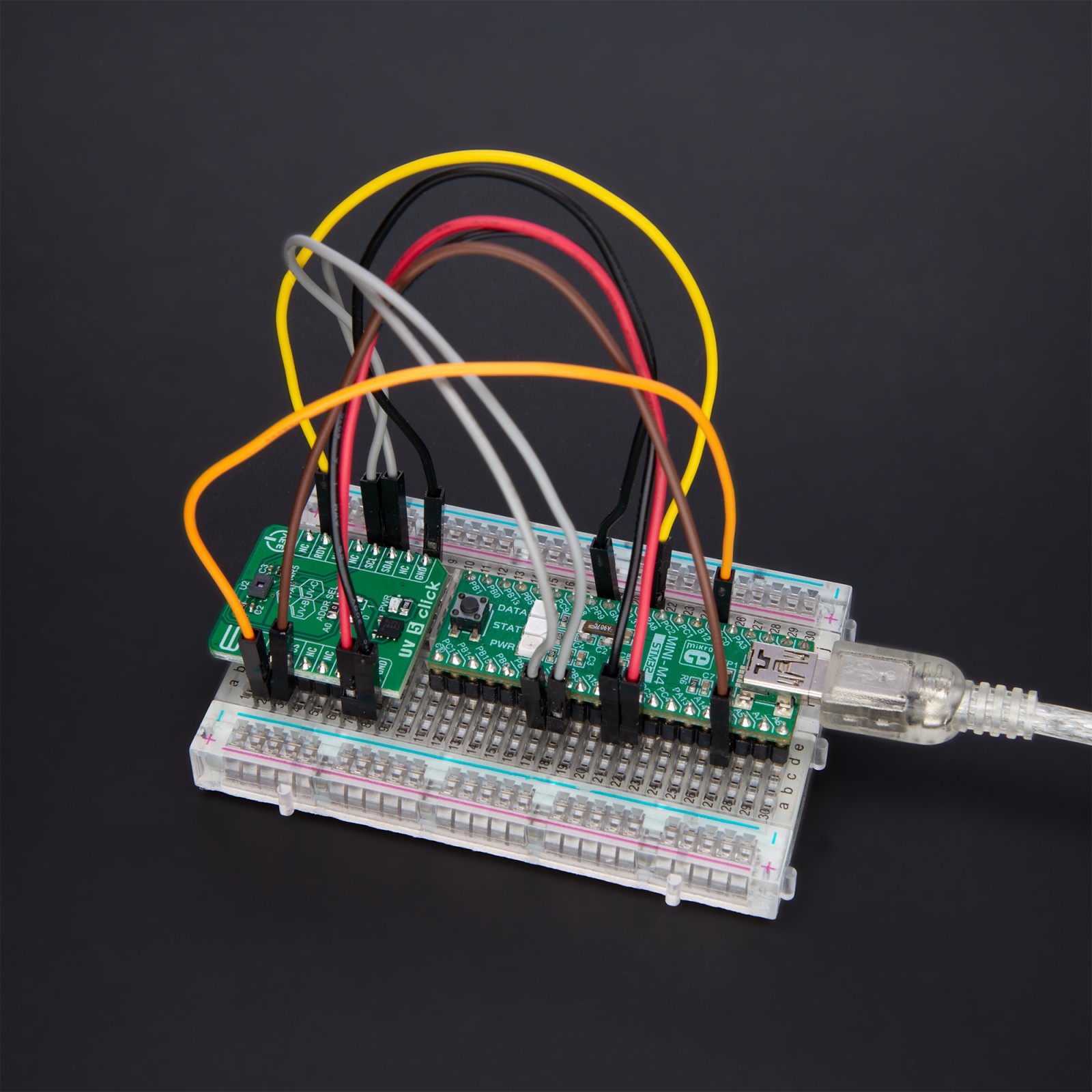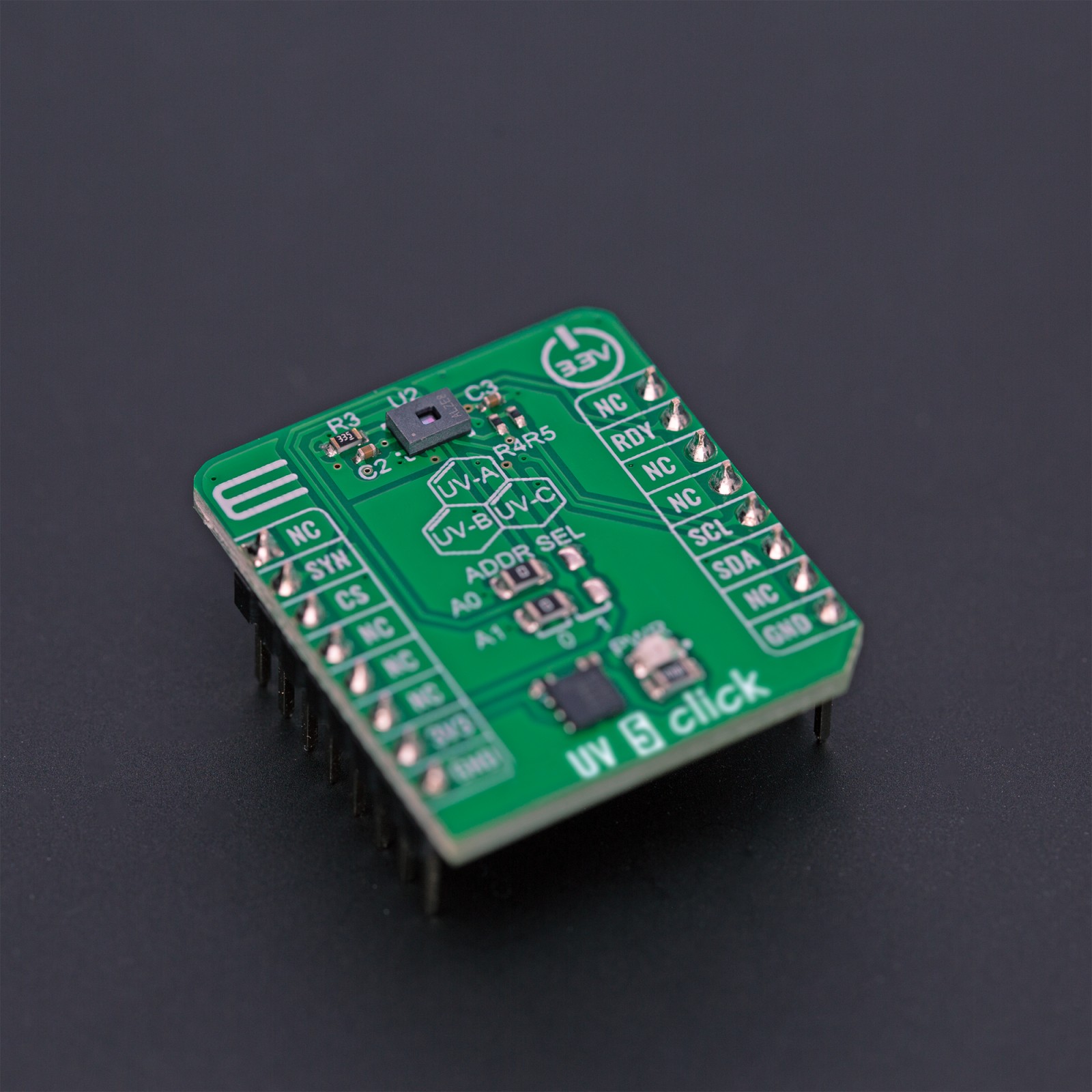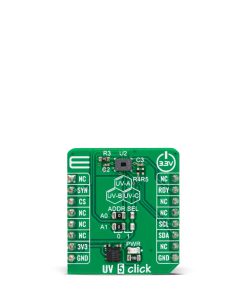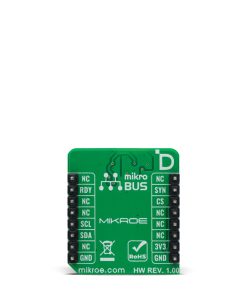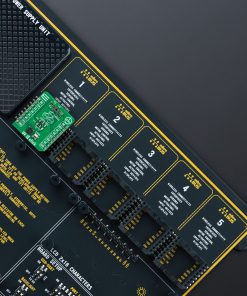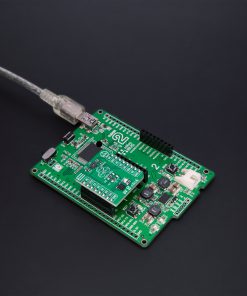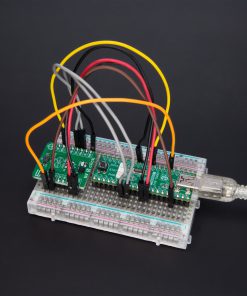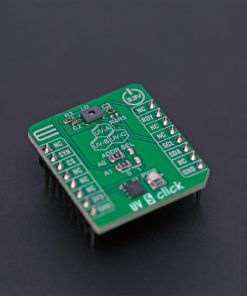UV 5 Click
R630.00 ex. VAT
UV 5 Click is a compact add-on board that can measure UV radiation. This board features the AS7331, a spectral UVA/B/C sensor from ams OSRAM. The sensor can measure UVA, UVB, and UVC, which are the main types of UV rays from the UV radiation of the sunlight. It uses ADC with a high dynamic range (16… 24-bit) for measurements from low to high radiation conditions and has a high sensitivity, which makes it usable for fluorescence light conditions. This Click board™ makes the perfect solution for the development of applications for UV disinfection, UV-curving, partial discharge monitoring, analytics (water monitoring, microorganism contaminations), phototherapy, skin diagnostics, horticulture, and more.
UV 5 Click is fully compatible with the mikroBUS™ socket and can be used on any host system supporting the mikroBUS™ standard. It comes with the mikroSDK open-source libraries, offering unparalleled flexibility for evaluation and customization. What sets this Click board™ apart is the groundbreaking ClickID feature, enabling your host system to seamlessly and automatically detect and identify this add-on board.
Stock: Lead-time applicable.
| 5+ | R598.50 |
| 10+ | R567.00 |
| 15+ | R535.50 |
| 20+ | R515.34 |

